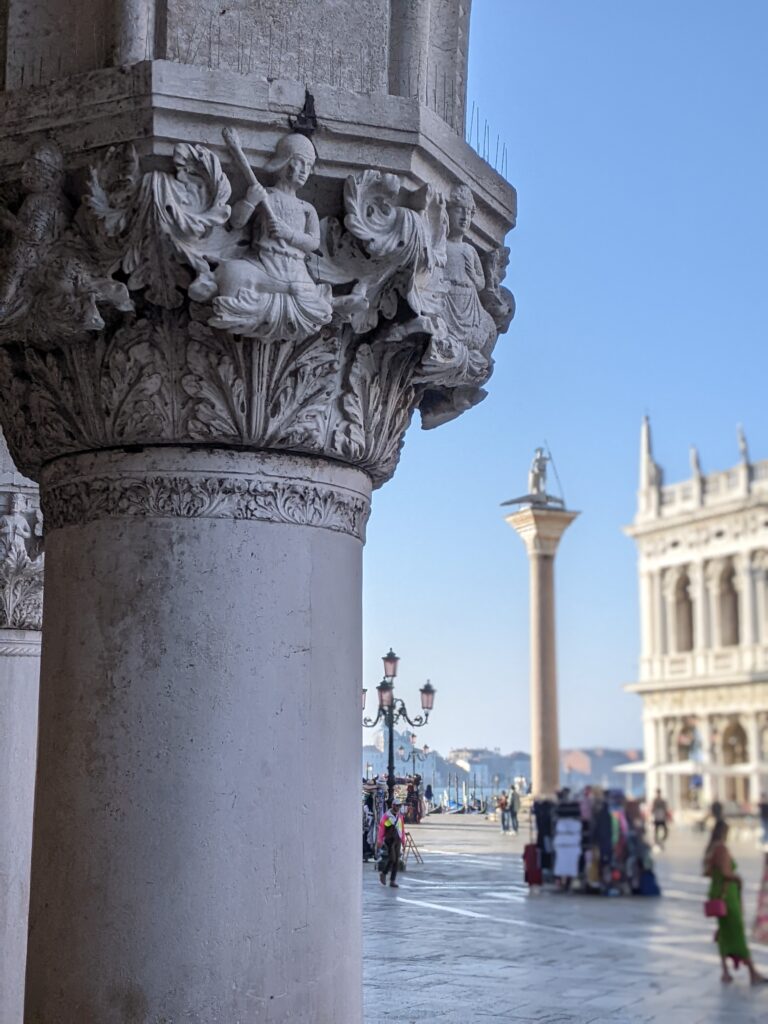
Upon arriving in Venice and boarding a ferry down the Grand Canal I felt simultaneously excited and entranced by the place, and like there was a sheet of plate glass between me and it. This second sense was to do with its unreality – this was a place that has been seen too many times in images so that when you get there you scratch your head and think, can this be real?
The above image is one of the carved capitals along the Doge’s Palace. Its the kind of detail that art critic John Ruskin would have sat on a stool in front of drawn in pencil when he came here in the nineteenth century. A good practice of seeing.
Henry James was complaining about all the American voices he could here in the street below his hotel window in the late nineteenth century, and a long list of people have complained about crowds of tourists in this city since. I will join that long list. Although I won’t include photos of the masses of humans that amble and walk in Venice in this post-Covid lockdown travel boom, I can tell you that they are overwhelming. They are enough to make you want to not come to Venice.
In order to make the best of this situation I stayed over near Arsenale, the old ship building area of the city. In some of the backstreets and canals here it is entirely local people. Looking up I admired this local’s balcony railing.
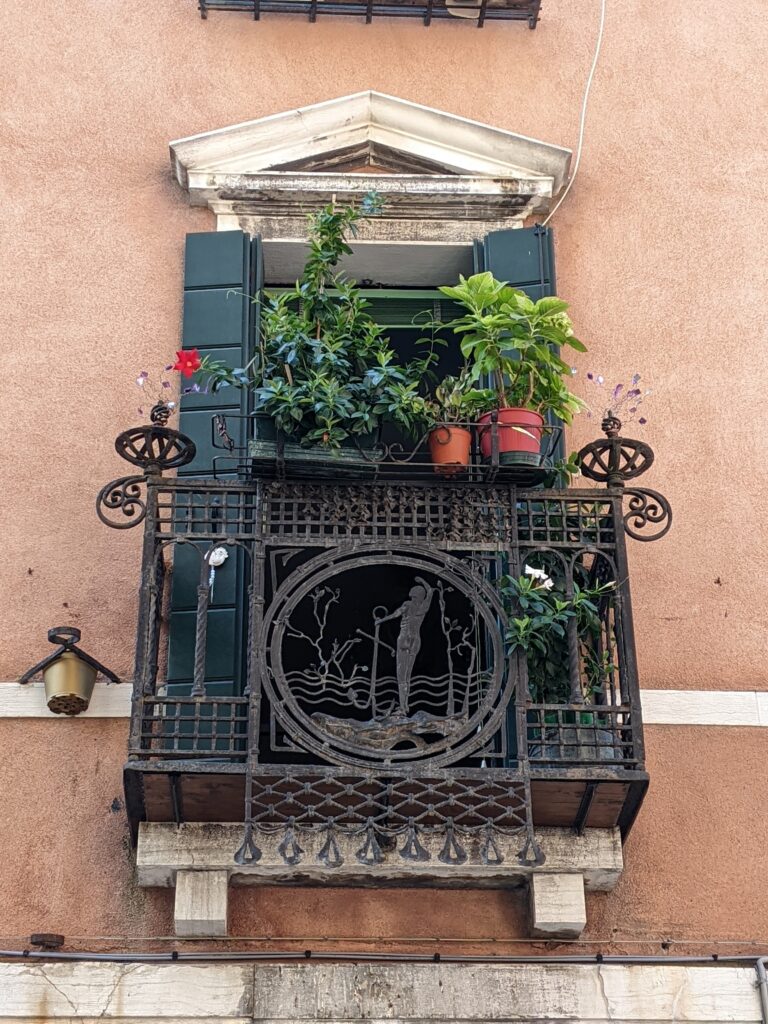
And yet you will at some point want to go to the heart of Venice. If you do so early in the morning you can walk into St Mark’s square and the Piazzetta and experience what Napoleon once called ‘the drawing room of Europe’ in peace.
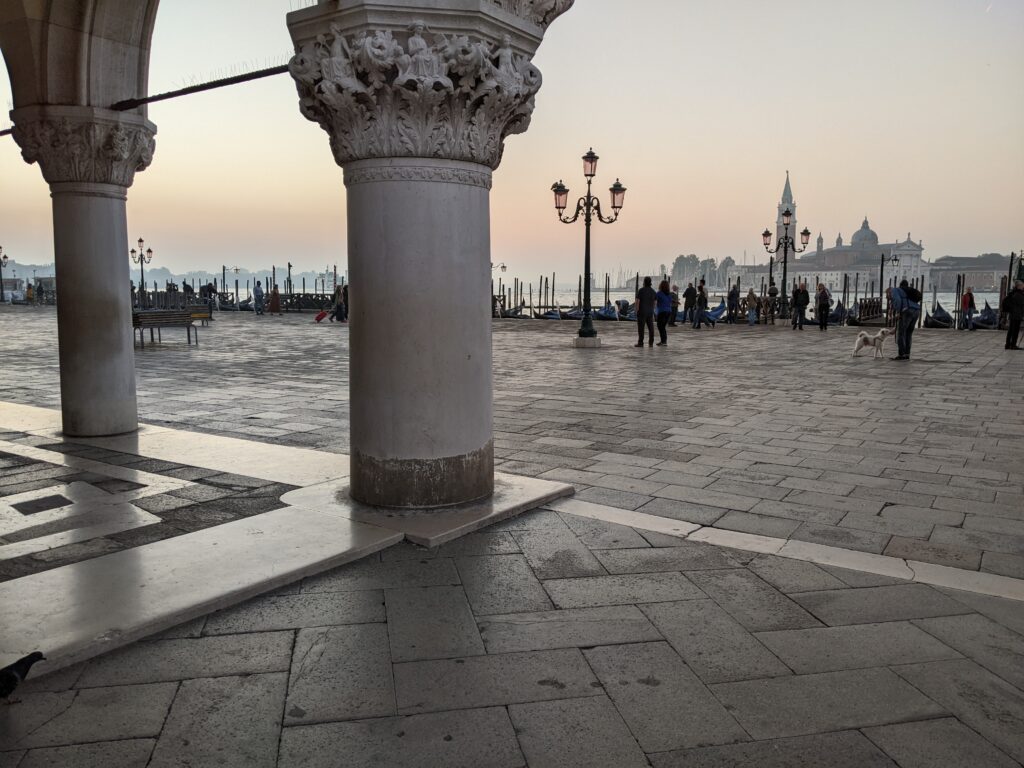
What I didn’t fully know until I was in Venice is that Venice isn’t an old town on a lagoon, it is a once mighty capital city on a vast marshland and lagoon. Most other urban spaces that are intimate with the sea are towns – where I grew up in Fremantle for example. However this was and still is a City. I don’t always like cities, and usually prefer smaller places that are more connected with the natural world, but again, if you’re interested in history you will be interested in Venice.
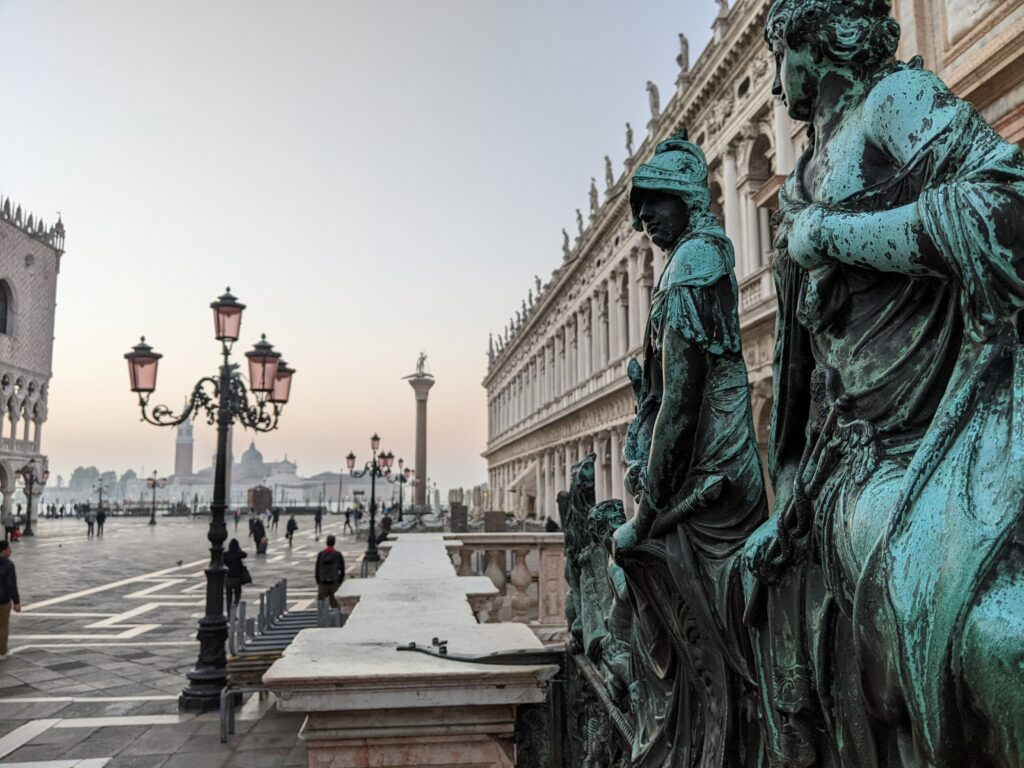
The long history of consumerism in Western civilisation can be given many starting dates. One you could argue for would be all of the luxury items traded by Venetian ships, and brought through this city. This detail comes from inside the Doge’s Palace. It is here that you get a real sense of the majesty of La Serenissima. The Republic of Venice used to be known as La Serenissima, being a sovereign republic that lasted for 1100 years. From 697 AD until Napoleon forced the last Doge to take off his robe in 1797 Venice was important, and for much of that time was a major force in global geopolitics.
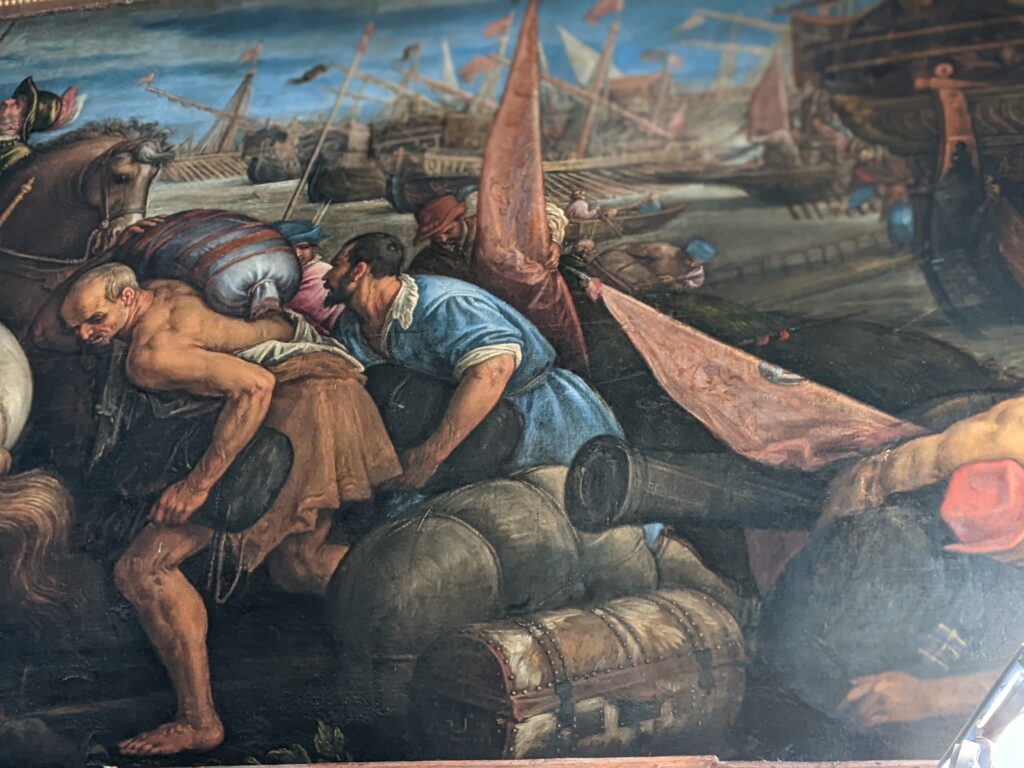
Looking out of a window in the Doge’s Palace I saw the quayside below… All of this wealth and all of this architecture came from trade, from early capitalism. Today it comes from tourism, but the numbers of locals are dropping as they can’t afford to live on the island.
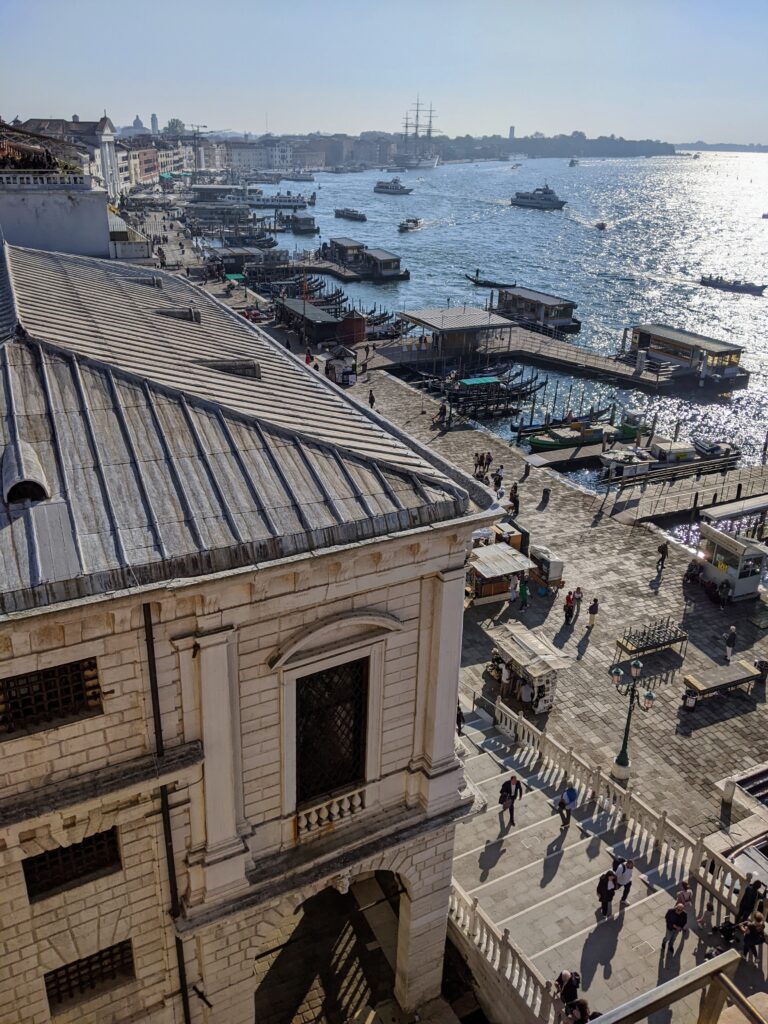
The powerhouse that was Venice was ruled by not so much the Doge himself, as the Maggior Consiglio, composed of 480 members taken from patrician families. In a painting I saw upstairs in the palace you see them process through the along the downstairs loggia in their long scarlet robes of state. See below.
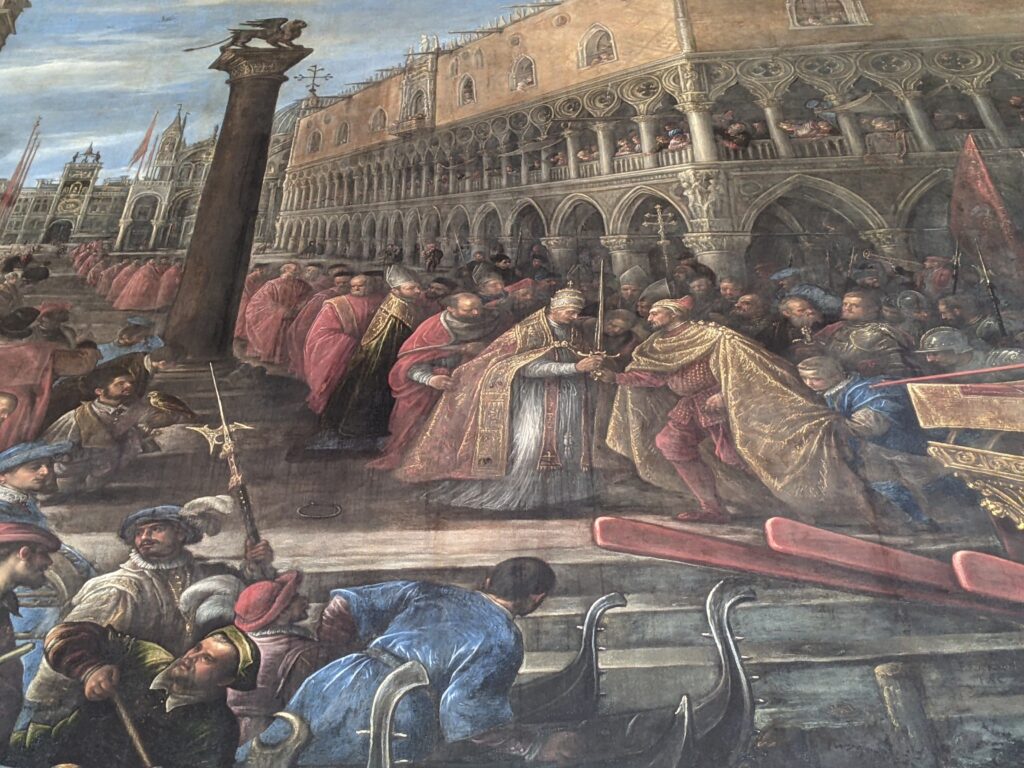
Walking in the Ducal Palace that morning I reflected on how the art and sculpture of this 500 year old building teaches the lesson to all those who would look that the glorification of the individual must never take place, but rather the glorification of St Marks Lion, the Venetian Republic, must shine forth beyond all individuals, even the Doge himself. Venice had a 1000 years of being the Serenissima, and then Napoleon burnt the Golden Books in which the Doge’s lineages were recorded and everything changed. But although Venice has lessons in paint and stone to teach us about not letting strongmen dictators take power and rule unilaterally and make a cult of their personalities, Venice does not have lessons on how to run the world beyond this. To be a member of the ruling patricians you had to have the right family, so it was nothing to do with ability, skill or talent. In other words this great Republic was not a meritocracy.
The Venetian republic had the council of ten, its own private version of the CIA. Transgress and you could be tortured or locked up. There is a covered walkway to the prison next door. Byron visited and called this walkway the ‘Bridge of Sighs’ as you would sigh when seeing your last glimpse of freedom through the stone work – and so I like many people took a photo of what this last glimpse may have been.
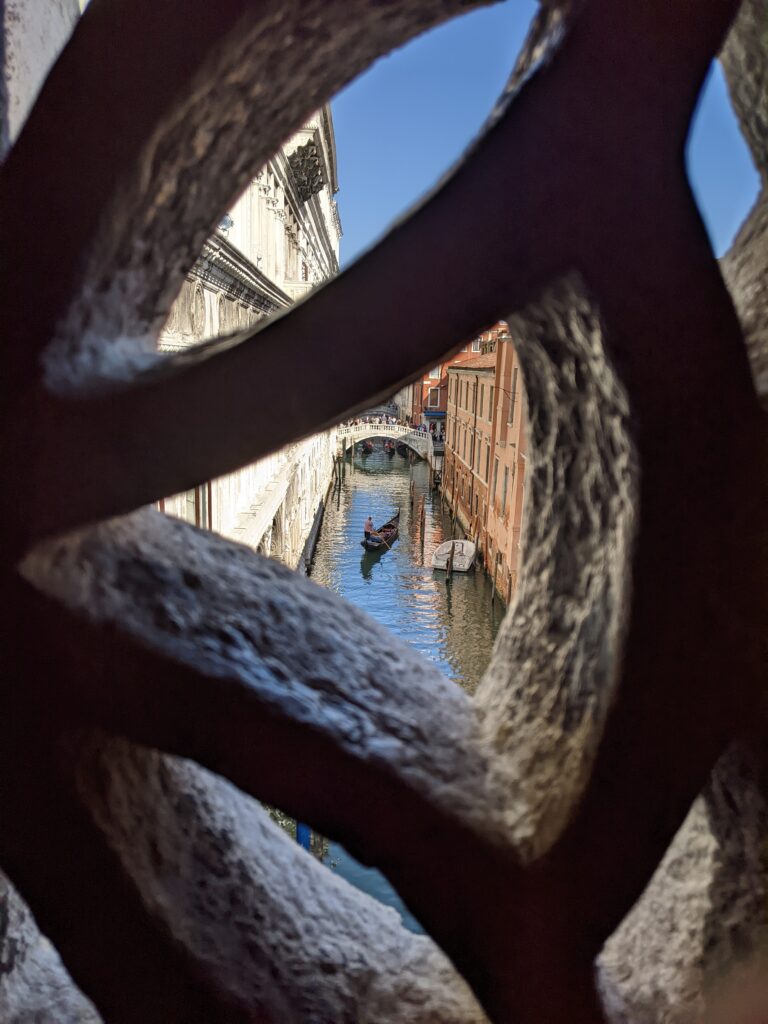
When waiting to enter the Doge’s Palace I walked over to the corner of St Mark’s Basilica to look at the porphyry sculpture made around 300AD of the four Roman emperors, the Portrait of the Four Tetrarchs. This was taken as spoilia, as spoils, from Constantinople long after it was carved and placed here, as part of a Venetian religious building. But for me personally I take it as a symbol of power in union, reminding me that to be strong as humans we need to come together with others, in bonds of affection.
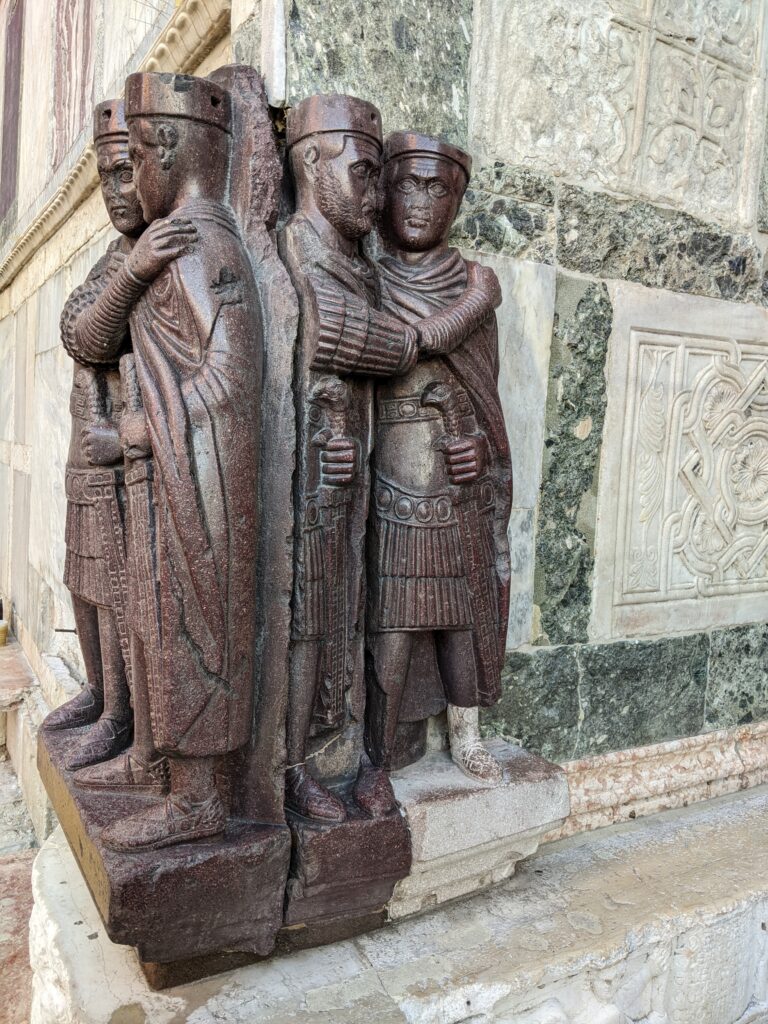
One of the most beautifully carved doors I have seen was upstairs in the Doge’s Palace…
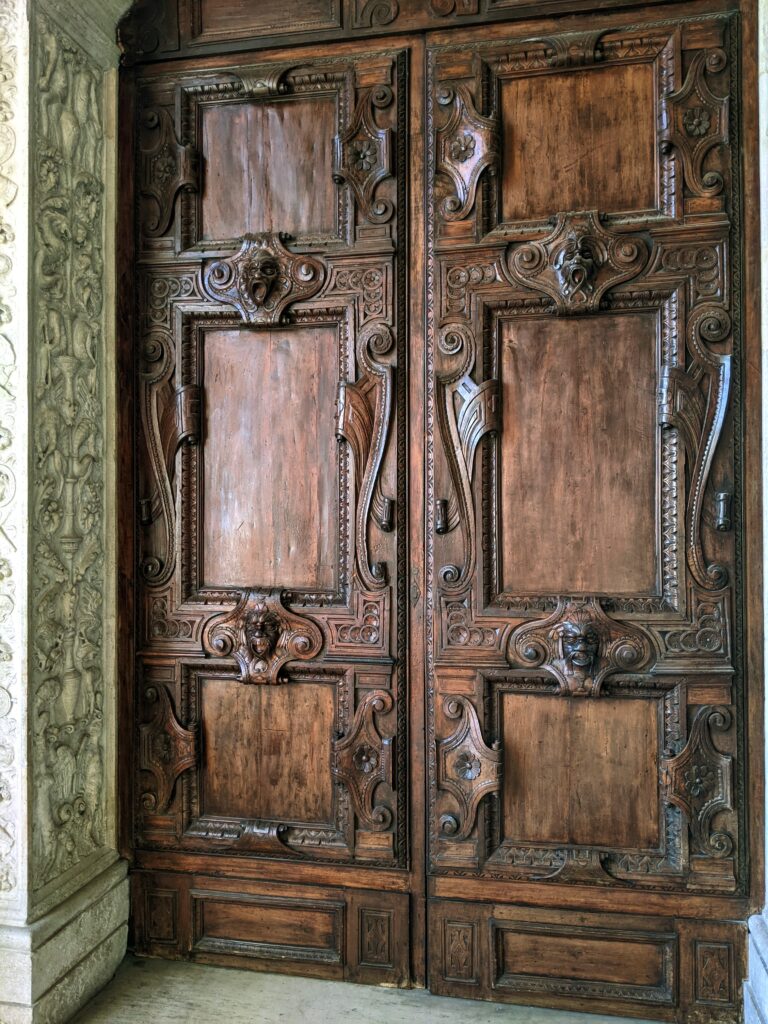
I won’t include a photograph of it here, but to really understand Venice you must visit the largest room in the Ducal Palace. Walk into the room of the major council, one of the largest rooms I have ever walked into (and I have been to places like Versailles and Blenheim Palace) in my life, and gasp at the grandeur of the space and then really comprehend how major a force in global geopolitics Venice was five hundred years ago.
It isn’t often that you wake up and look out of the window to see a fully rigged, three-masted, 80 metre sailing ship bobbing outside. Amerigo Vespucci was there one morning – she is a training ship for the Italian navy, almost a century old.
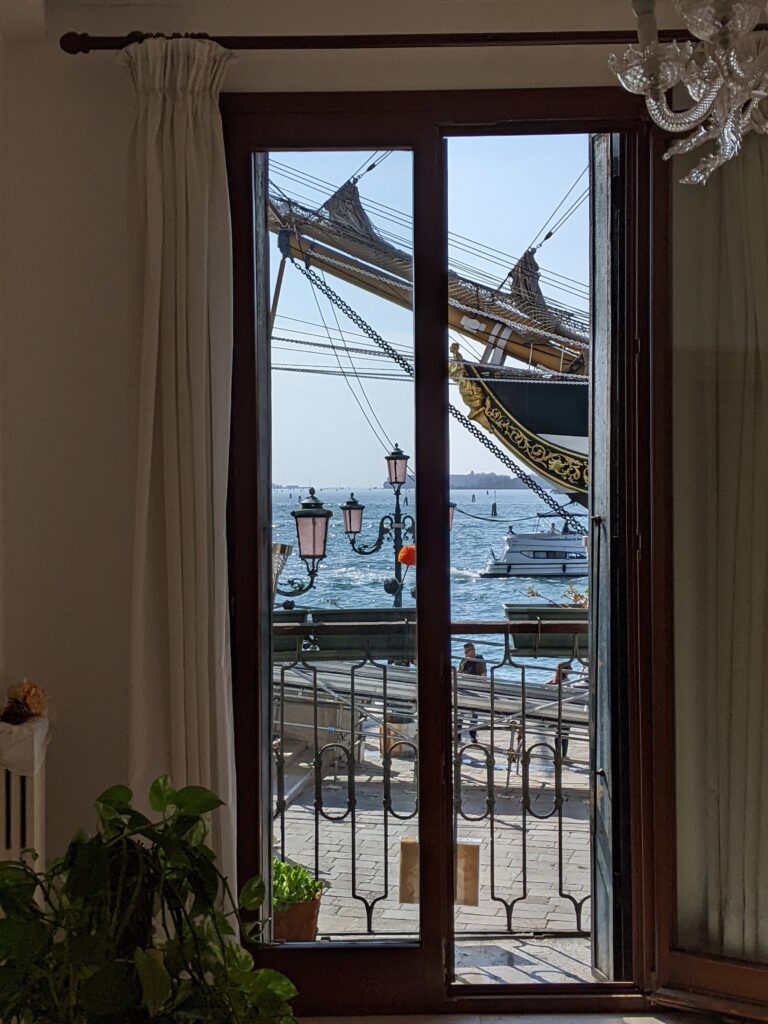
Lapped by water, colourful and atmospherically dilapidated facades, and no sound of cars, no need to be vigilant about cars whizzing by, coloured marbles, Gothic tracery in stone… Drinking a beer by the quayside as the sun sets behind Il Lido you can still enjoy Venice.
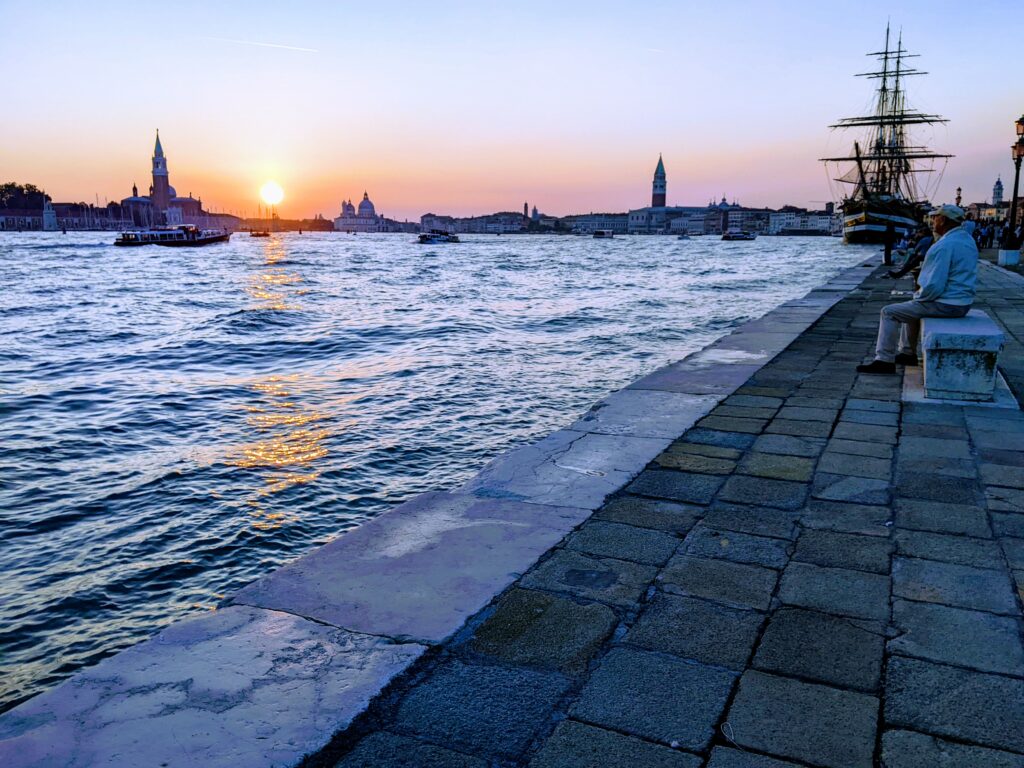
Beautiful doors continue to fascinate me, and ones that have been entered after stepping out of gondolas are even better.
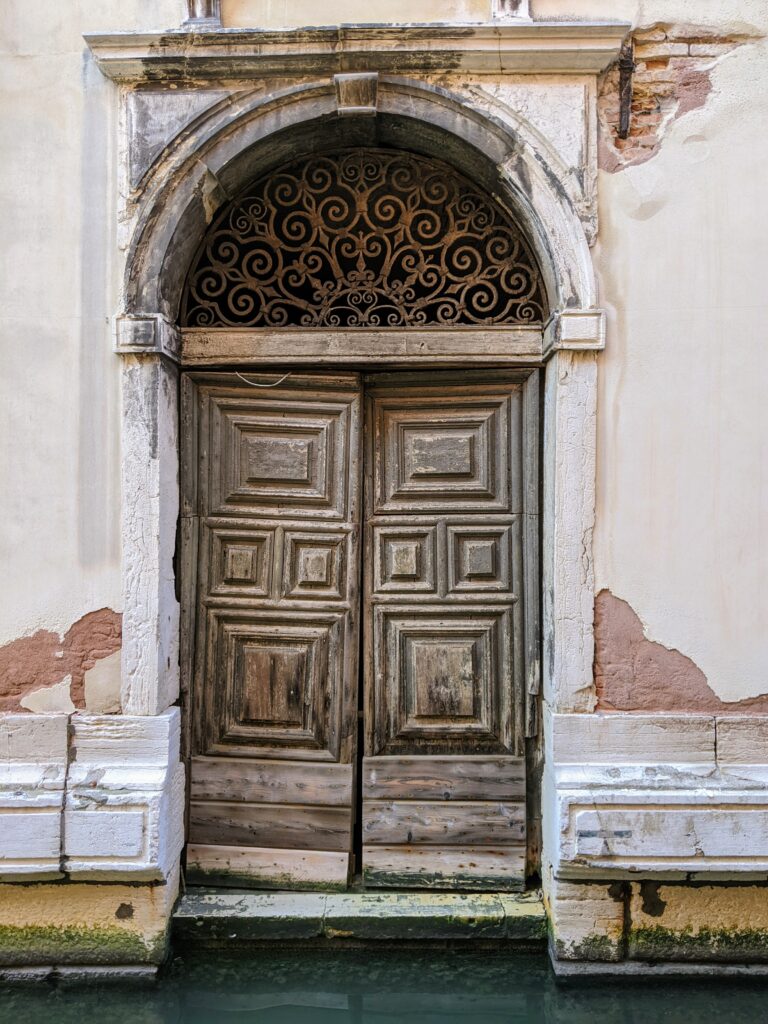
The colours of the facades are one of the pleasures of Italy.
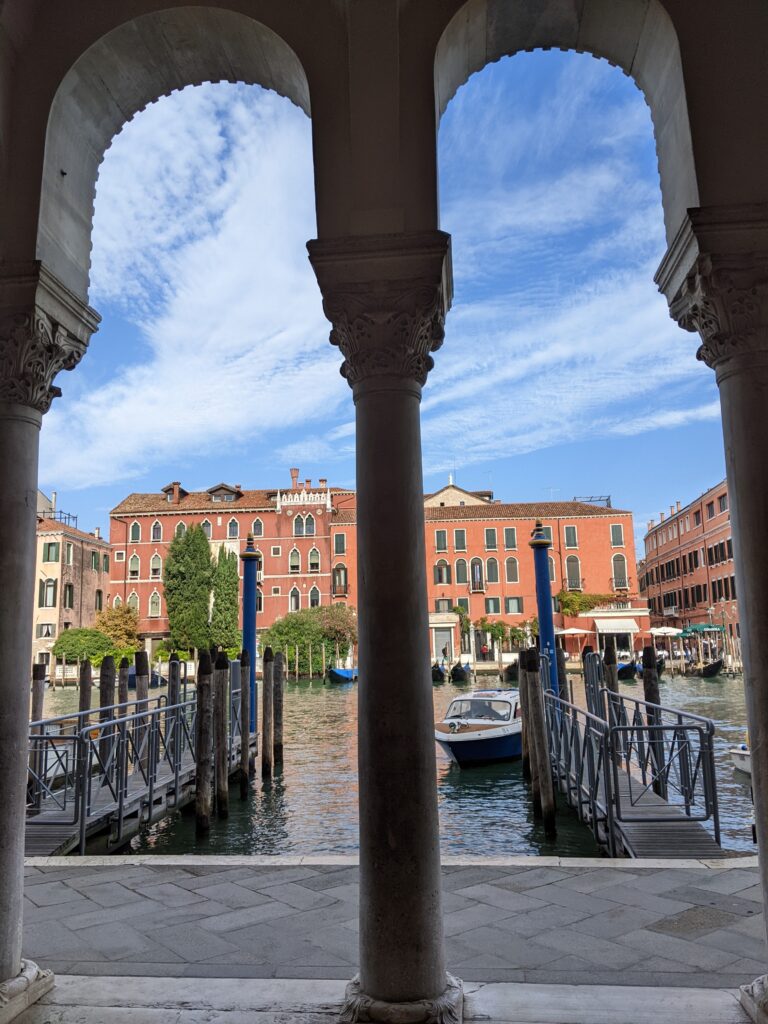
One of the wealthiest palazzos in the background, on the Grand Canal.
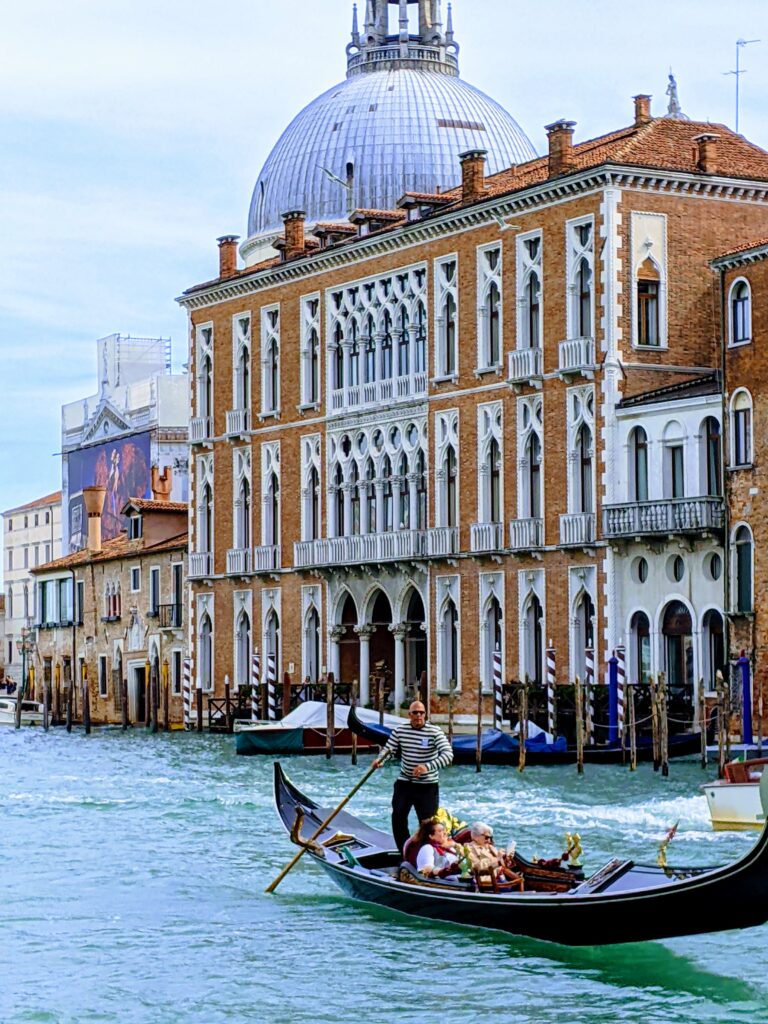
The lion of St Mark guards the entrance to Arsenale, the ship yards.
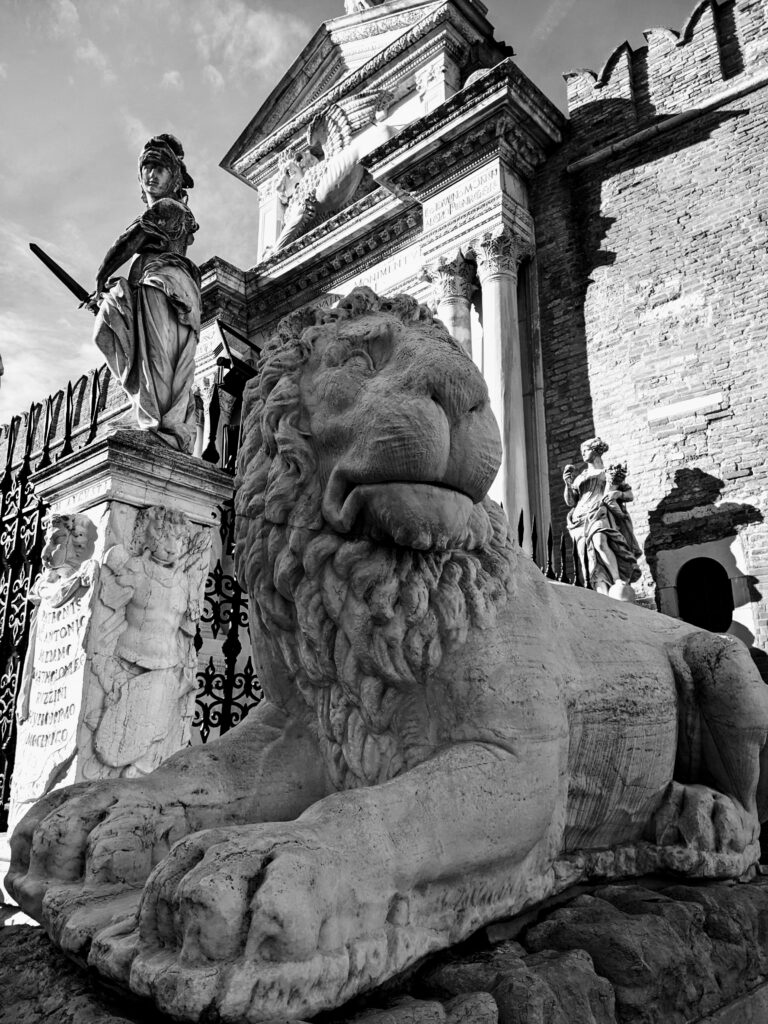
One of the most over-photographed perspectives in Venice – but here it is again…
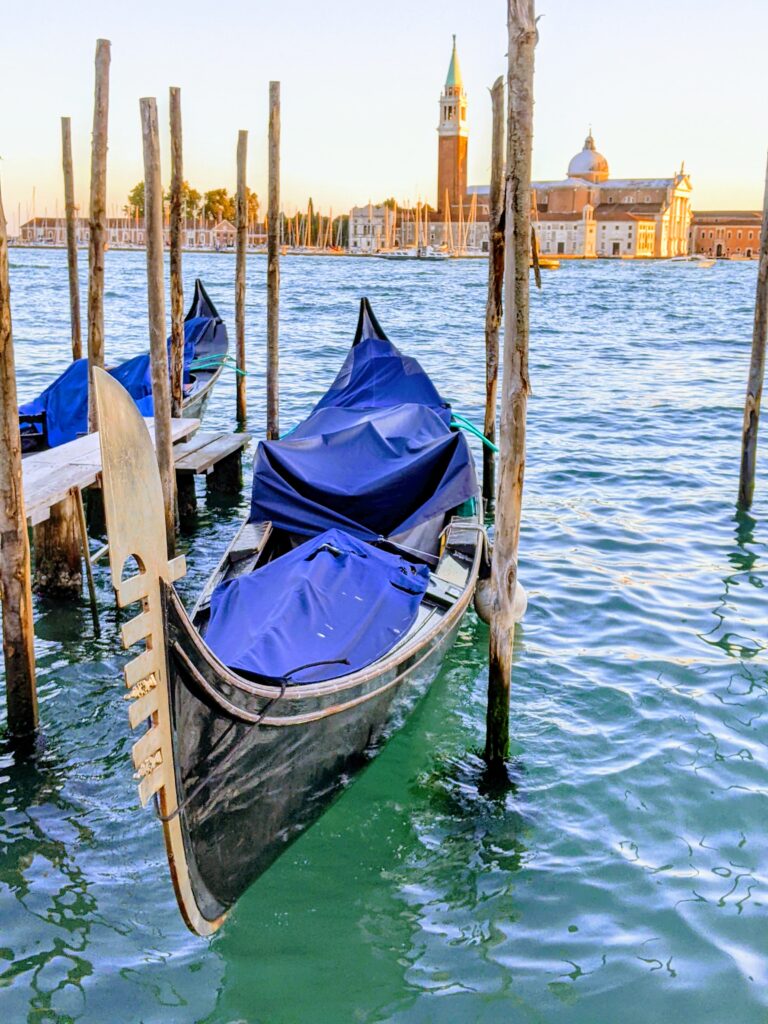
A more typical back street of a local neighbourhood.
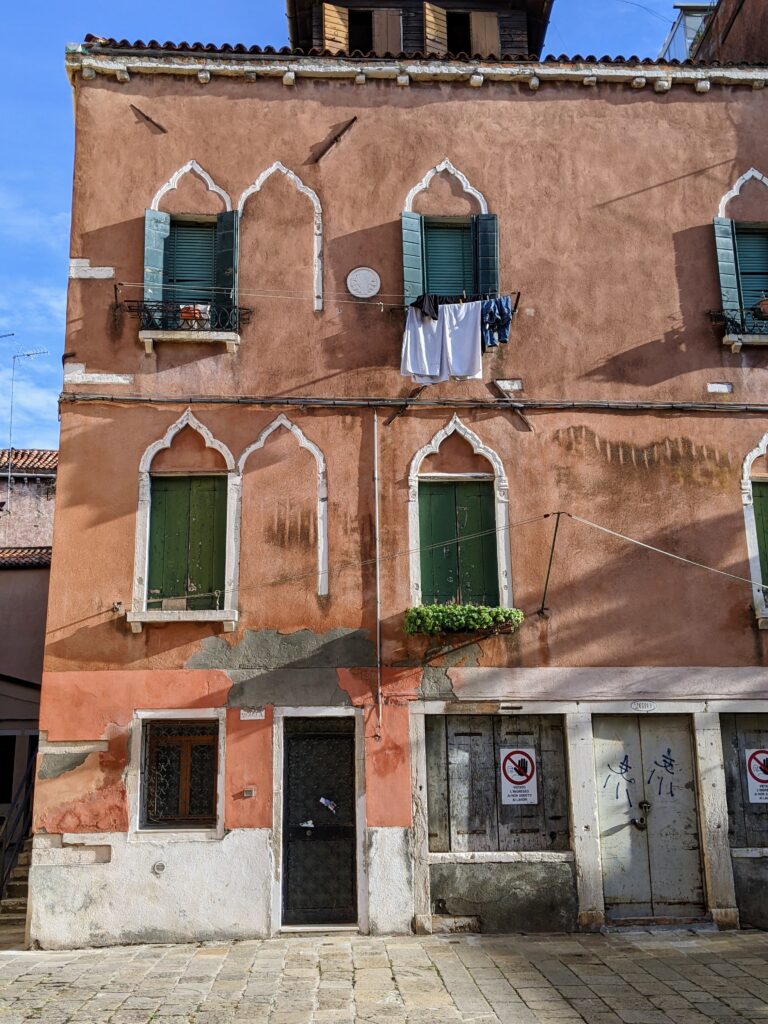
Even the nineteenth century street lamps are charming.
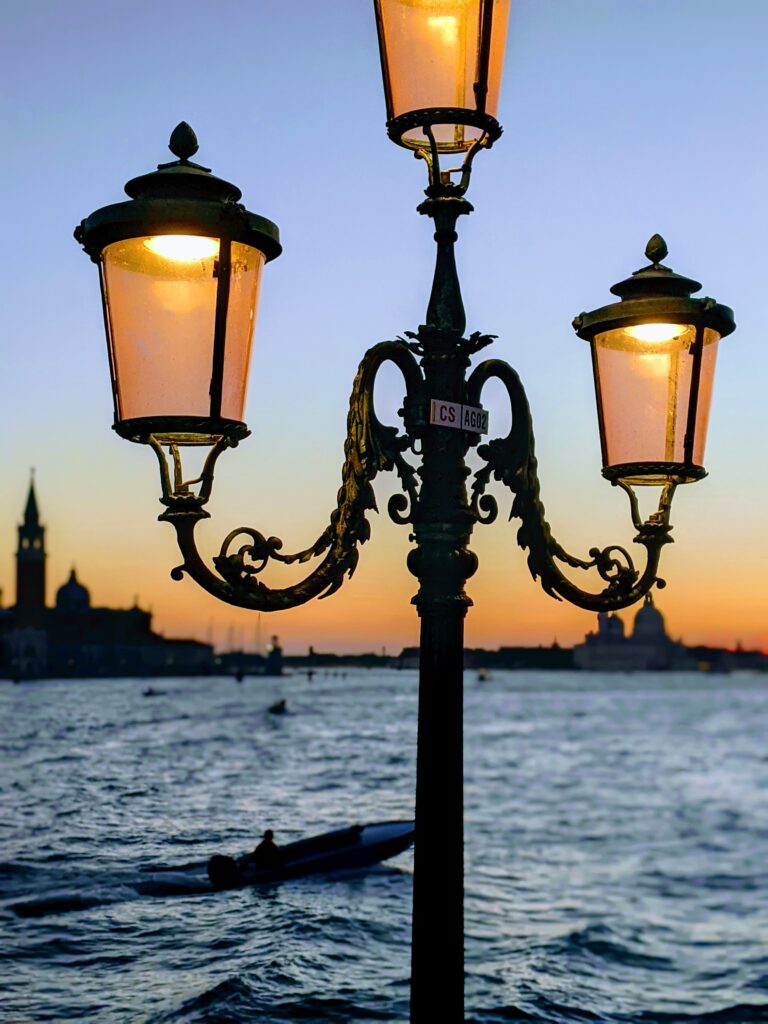
Below aqua alta, high water, in a palazzo.
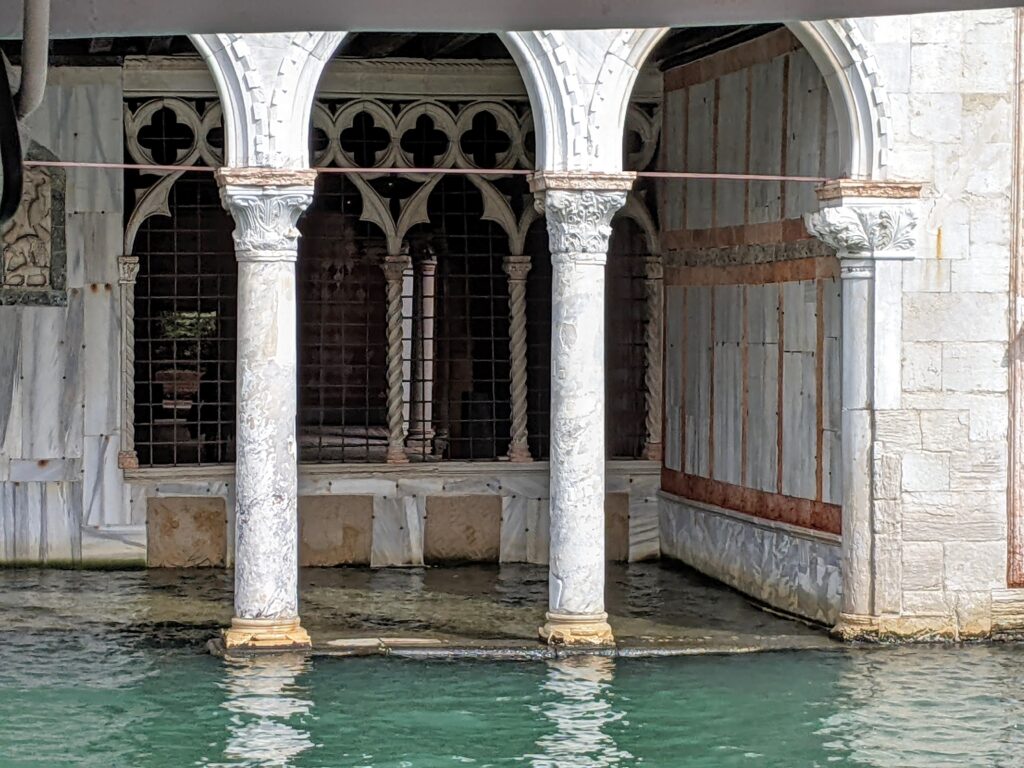
And strolling in the back streets and along the canals.
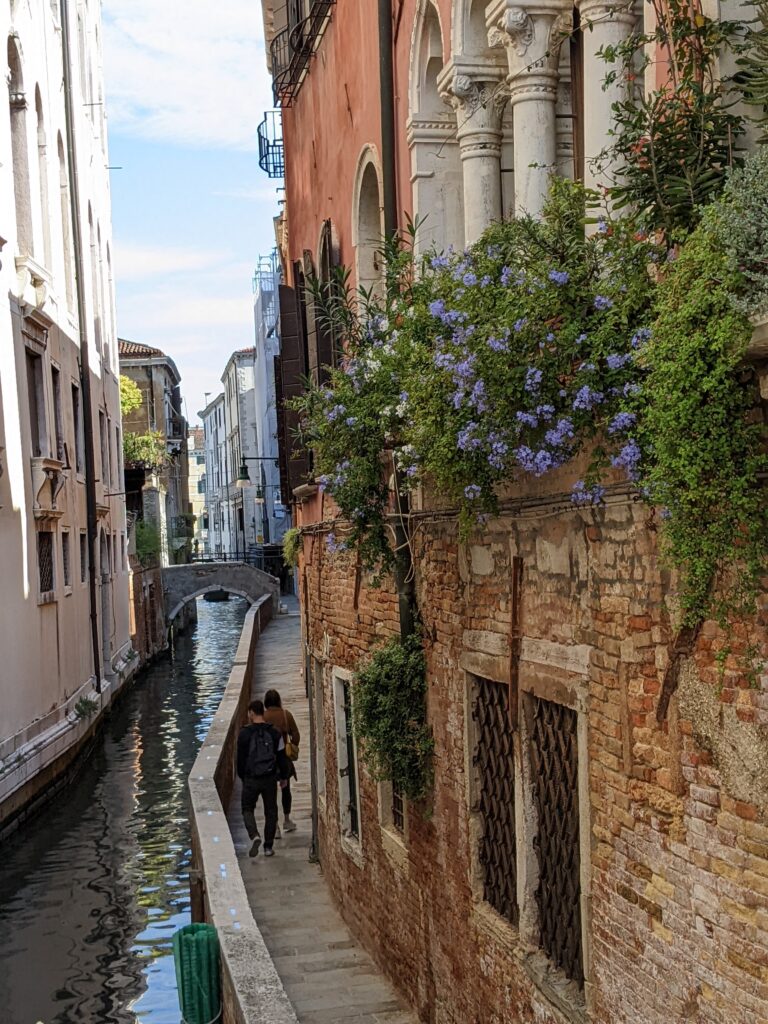
The former British colonies are often not architectural gems – think of Penang in Malaysia for example, compared to what the French did in Hanoi’s French Quarter or the Spanish in Havana. Although Britain has had some great architects and works of architecture, many of its former colonies could have been designed with more in the way of great public squares, churches and quayside walks. In Fremantle we can’t even stroll much along our quaysides as for many decades the entire port has been hermetically sealed from its inhabitants by large fences which stop stowaways and criminals from making contact with the cargo carriers it serves. Here in Venice the Cruise ships were banned from the lagoon in 2021, thank god. And you can stroll along the lagoon and look at the beautiful facades ringing it up to the entrance to the Grand Canal with the dome of Santa Maria Salute in the centre, and feel like you are on the liminal edge of commerce for centuries past (even if all it is selling now is its past and its charm). What a difference all of this makes.